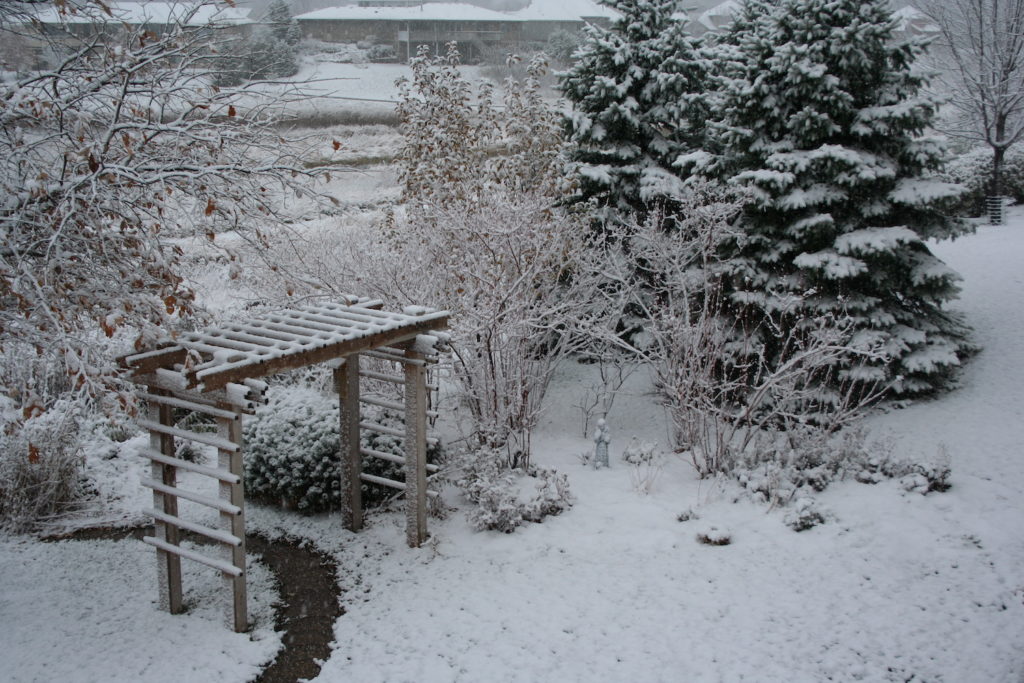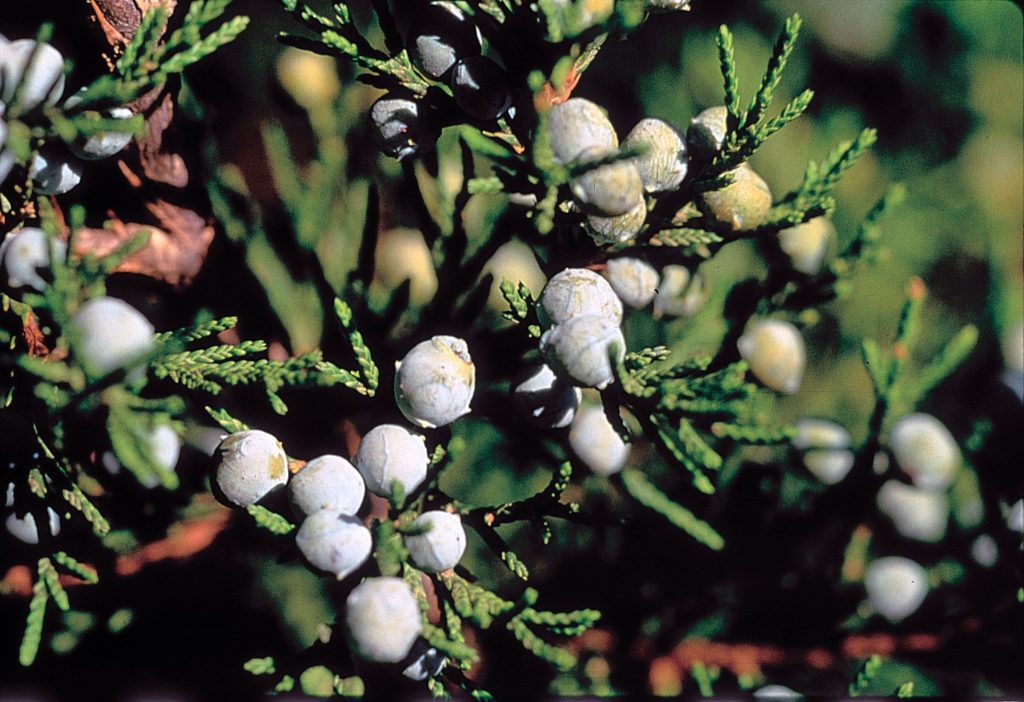The most recent episode of Grow it, Minnesota is an interview with Alan Branhagen, author of the Midwest Native Plant Primer, a great new book on how to design a home garden with native plants. The book offers a way to approach designing the landscape as well as profiles of 225 native plants that work in Midwestern gardens.
Why Native Evergreens?
During the podcast, we talked a lot about plant function—that is, what plants do besides look pretty—and trees have many important functions, including acting as wind breaks, helping you shade your house, and offering food, shelter, nesting space and much more for birds, butterflies and other pollinators. Native evergreens do all of that AND they add winter interest to the garden, something that is vital in climates where the deciduous trees are bare seven months of the year. (I write this as the trees in my neighborhood are flaming with reds and yellows and the boulevard is accumulating leaves by the thousands. Bare branches are not far off.)
Evergreens also make a great privacy screen and are a wonderful backdrop to other plantings. In my former home, I benefited from two neighbors who planted evergreens that added a beautiful green backdrop to my shrub and perennial borders.

Native evergreens can get large, though, so choosing the right evergreen for your yard is important. Here are three (plus one extra) that Alan recommends.
Eastern White Pine
If you have a good-sized suburban or rural lot, an eastern white pine (Pinus strobus) is a terrific choice. Its native range includes southeastern and northeastern Minnesota, but it does well in much of the state. (I had one of these in my Northfield yard.) It’s a beautiful tree, with long, soft needles and seed cones that open to drop their seeds. It is not small—a mature height is 50 to 80 feet with a mature width between 20 and 40 feet.
The tree can handle some wetness, but it does not like very alkaline soil or salt, so keep it away from the street. It also can get by with less than full sun—4 to 6 hours a day. Birds love to hang out there in winter, and we almost always had a nest or two in our eastern white pine.
While it is a bit more “fussy,” according to Alan, the red pine (Pinus resinosa) is another good option. It’s our state tree in Minnesota and is sometimes called the Norway pine. It is more susceptible to insect and disease problems, however.
Balsam Fir
The Balsam fir (Abies balsamea) has the classic Christmas tree shape and needles and that signature scent. It grows 50 to 85 feet tall with a pyramidal shape. The tree does well in residential landscapes. It can handle a bit of shade, and Alan recommends planting them in a cooler situation in an urban environment, such as on the north or east side of your home.
Balsam firs produce interesting flower/conelike structures called stroboli, which are male or female. The pollinated female cones produce a reddish-brown fruit.
Eastern Red Cedar
Alan’s final suggestion is the eastern red cedar (Juniperus virginiana), which he thinks should be planted more than it is. Hardy to USDA Zone 3, eastern red cedars are a conical-shaped shrub that can take even the toughest of conditions. It grows well in alkaline soil or in areas where salt is prevalent. It can handle drought and heat easily. It grows best in well-drained soil and full sun, and is a good choice for windbreaks or hedges.

Eastern red cedar has attractive bark and the female trees produce a lovely blue fruit that birds love. In his book, Alan points out that eastern red cedar is the sole host of the olive juniper butterfly, the only green butterfly in the Midwest. This tree can grow up to 40 feet tall, with a loose branching structure. In winter, the foliage turns a rusty color, which is one reason eastern red cedars are not as popular as they might be. However, the color blends well with the muted hues of the winter season.
What are your favorite native evergreens?
Do you know why balsams are dying? We live north of Bemidji, and had about 20 in our yard and they have all gotten brown patches and then most gone completely brown over the past year and died. We are devastated. We believe it is related to the drought last summer and long cold winter that followed. We had an arborist out who confirmed that there is no sign of a pest. We see this happening around us in forests as well. Seems Wisconsin may have experienced a similar happening in the past few years.
What would you tell us to plant in place of the balsams? We want to care for the land as global warming continues.
Many thanks,
Maria & Dave
I’m so sorry that your trees are dying! Did the arborist mention spruce budworm? Apparently that has been an issue in northern Wisconsin for several years. Here’s a link: https://forestrynews.blogs.govdelivery.com/2020/09/02/spruce-budworm-and-balsam-fir-mortality-in-northern-wisconsin/
I’ll do some research on what would be good plants for northern Minnesota now. There have been a number of changes in your climate, especially winter cold, according to the U’s climate research.